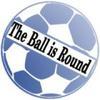Sometimes you see a slice of history that makes you double-take. Last month I was watching the excellent BBC series, The Seventies, written and presented by Dominic Sandbrook. He was focusing on football violence that was on the rise in the decade before mentioning a game that was played at Telford United in 1976. It appears that the full England 1966 World Cup winning team came to Telford’s Bucks Head stadium in October 1976 to play a friendly. Just as Dom appeared to be ready to go into lengthy detail, the programme cut to a story about another ”bloody strike” and I was left hanging. A search on Uncle Google revealed very little detail – in fact the official history of (AFC) Telford United devoted just 18 words to the game.
I couldn’t let the story go back into the hidden cupboard. I had to find out more but it seemed everyone wanted to forget about the game. An email to the FA drew a blank, and as this wasn’t an official game, there were no records to be found in their archive.
Interestingly, England ran out in a white Admiral kit, without the Three Lions on their chest. Whilst I cannot find an official source, it appears that the FA refused to sanction the game and thus banned the team from wearing an official kit. A few months earlier they had allowed another “unofficial” England game to take place when they played in the “Bi-Centennial” Tournament in the USA. The tournament, won by Brazil also featured Italy. The day after England played Team America in Philadelphia, the Football Association said it was regarded as “a training game” and that caps would not be awarded to the participating players. Accordingly, the FA does not include the match in its list of full internationals. The associations of both Brazil and Italy, on the other hand, listed their national sides’ matches against Team America as full internationals. Of course, if someone would have been sponsoring the tournament and there was prize money it may have been a different matter (must remember not to mention Trinidad and Tobago at this point).
But back to the 11th October 1976. Telford United (long before they gained the AFC) were managed by Geoff Hurst which may have something to do with the game taking place. Hurst also arranged high-profile friendlies against Chelsea and West Ham United during his stint in the hot seat at The Bucks Head. All of the starting XI from July 1966 had agree to play in a game to celebrate the centenary of Telford United. One question from me at this point. Telford started life as Parish Church Institute in 1872 and then seven years later to Wellington Town. They didn’t actually change their name to Telford until 1969 so what 100 year anniversary were they actually celebrating? I would hasten a guess to say it was a liberal usage of the word “centenary”. But the local’s didn’t care and came flocking to the ground, taking every space possible before Bobby Moore led the “England” team out.
The former internationals won 4-1 with goals from Jack Charlton (from the penalty spot), Bobby Charlton, Alan Ball and of course Geoff Hurst. Which of course begs the question which side was he really playing on? Did Geoff do the team talk for his Telford United side dressed in the kit of the opposition? Did he deliberately change the tactics and then exploit them? Surely his actions could have opened the doors to possible match fixing allegations these days?
It seems a real shame that such a match has been hidden from the world for nearly forty years. For those present on the night it must have been an amazing experience, but for the rest of us including Uncle Google, we will simply have to live in ignorance for the rest of our lives. Hurst stayed at Telford for a couple of seasons, combining the role with a coaching position with Ron Greenwood and the England side before he went on to be Chelsea’s manager. Hurst was replaced at Telford by fellow World Cup winner Gordon Banks. However, like Hurst, Bobby Charlton, Stiles, Ball and Moore, he was more cut out as a player than a manager.

